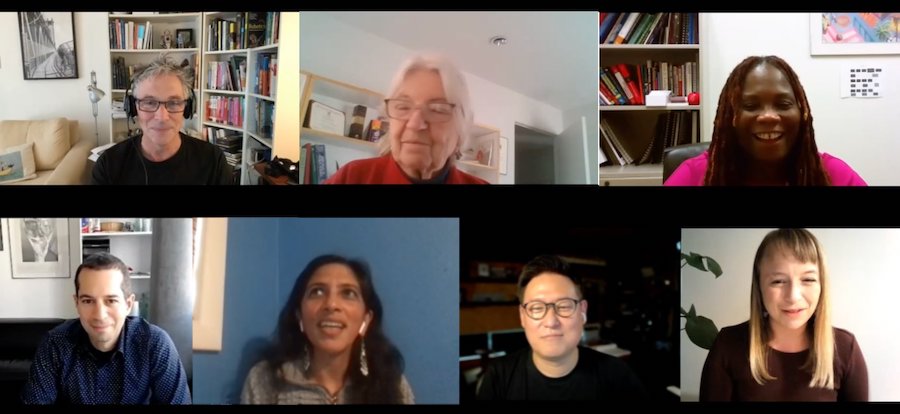New to Natural Language Processing? This is the ultimate beginner’s guide to the attention mechanism and sequence learning to get you started
Researchers in a joint research project led by a scientist from City University of Hong Kong (CityU) have developed an easy way to make millirobots, by coating objects with a glue-like, magnetic spray. Driven by the magnetic field, the coated objects can crawl, walk or roll on surfaces. As the magnetic coating is biocompatible and can be disintegrated into powders when needed, this technology demonstrates the potential for biomedical applications, including catheter navigation and drug delivery.
In the past year, lockdowns and other COVID-19 safety measures have made online shopping more popular than ever, but the skyrocketing demand is leaving many retailers struggling to fulfill orders while ensuring the safety of their warehouse employees.
New research that employs curved origami structures has dramatic implications in the development of robotics going forward, providing tunable flexibility—the ability to adjust stiffness based on function—that historically has been difficult to achieve using simple design.
Subramanian Sundaram, a biological engineer affiliated with both Boston University and Harvard has been looking into the current state of robot hands and proposed ideas regarding where new research might be heading. He has published a Perspective piece in the journal Science outlining the current state of robotic hand engineering.
The introduction of the fifth generation mobile network, or 5G, will change the way we communicate, multiply the capacity of the information highways, and allow everyday objects to connect to each other in real time. Its deployment constitutes a true technological revolution not without some security hazards. Until 5G technology has definitively expanded, some challenges remain to be resolved, including those concerning possible eavesdropping, interference and identity theft.
Telling humans apart and following them as they move in their surrounding environment could be two highly valuable skills for service robots. In fact, when combined, these two capabilities would allow robots to follow specific people as they are interacting with them or offering their assistance.
Over eight days of testing, 369 drone flights launched and landed at a rural test site outside Blacksburg. In a slice of airspace that covered less than a quarter of a mile, as many as 12 aircraft were sometimes flying at once. These flights were dense by design, choreographed to answer a question that's increasingly crucial to drone integration: How can drones share the air without bumping shoulders?
Outer space is unforgiving. This is why precision drives embarking on a trip to other planets need to meet extremely high quality standards.
A small drone takes a test flight through a space filled with randomly placed cardboard cylinders acting as stand-ins for trees, people or structures. The algorithm controlling the drone has been trained on a thousand simulated obstacle-laden courses, but it's never seen one like this. Still, nine times out of 10, the pint-sized plane dodges all the obstacles in its path.
When developing robotic systems and computational tools, computer scientists often draw inspiration from animals or other biological systems. Depending on a system's unique characteristics and purpose, in fact, nature typically offers specific examples of how it could achieve its goals rapidly and effectively.
As barriers between human activities and robotic capabilities diminish — moving beyond the fenced activities of last-generation industrial robots — new collaboration and workflow models are bringing humans and robots together in industry.
The Initiative supports research in the U.S. that will accelerate the development and use of co-robots, an emerging robotic technology that complements, not replaces, human workers.

Are you curious about the people behind the robots? The 2020 IEEE/RSJ International Conference on Intelligent Robots and Systems (IROS) features a new Original Series called Real Roboticist hosted by Sabine Hauert, President of Robohub and faculty at University of Bristol.
The show looks at the people at the forefront of robotics research. How did they become roboticists? What made them proud and what challenges did they face? What advice would they give to their younger self? What does a typical day look like? And where do they see the future of robotics? If you want to find out, watch the series for free on the IROS On-Demand platform until 25 November (located under Technical Talks or at this link).
The series features the following roboticists:
- Michelle Johnson (Associate Professor of Physical Medicine and Rehabilitation at the University of Pennsylvania): Robots that Matter
- Davide Scaramuzza (Professor and Director of the Robotics and Perception Group at the University of Zürich): Drones & Magic
- Dennis Hong (Professor of Mechanical and Aerospace Engineering at the University of California Los Angeles): Making People Happy
- Ruzena Bajczy (Professor Emerita of Electrical Engineering and Computer Sciences at the University of California Berkeley): Foundations
- Peter Corke (Distinguished Professor of Robotic Vision at the Queensland University of Technology): Learning
- Radhika Nagpal (Fred Kavli Professor of Computer Science at Harvard University): Enjoying the Ride
To perform tasks that involve moving or handling objects, robots should swiftly adapt their grasp and manipulation strategies based on the properties of these objects and the environment surrounding them. Most robotic hands developed so far, however, have a fixed and limiting structure; thus, they can perform a limited number of movements and can only grasp specific types of objects.
